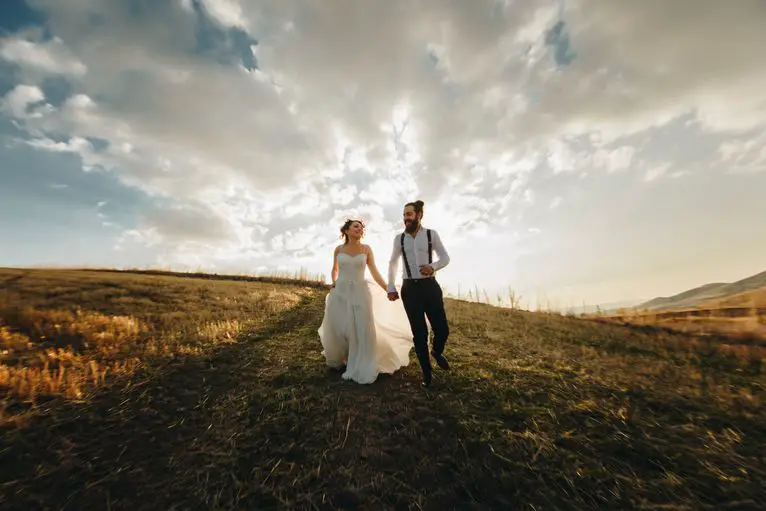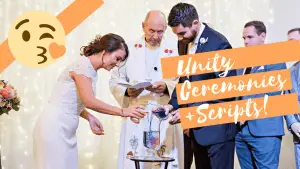Welcome to your one-stop free resource guide for planning a green eco-friendly wedding! I’ve done months of research to put this together, so that we can all have this information in one place!
Below you’ll find a complete 20-step guide to planning your green eco-friendly wedding, plus basic principles and a timeline to follow.
Why did I write this guide? I’ve been so disheartened hearing about my friends who got engaged, only to feel like they were on some sort of wedding conveyor belt, going through the checklist of planning items expected of them… without much thought about why they were doing it.
I feel like our wedding planning processes should more in tune with the environment, more focused on the marriage than the wedding… and just generally more meaningful than what most of us are doing these days.
I started planning my own green eco-friendly wedding recently, and will be getting married this summer. My partner and I were getting frustrated looking for the information we needed on planning green weddings, as it was scattered all over the internet and in so many different books. This post contains all that I’ve learned on this super interesting topic, compiled all together! I hope it serves to help us all on our green wedding journeys 🙂
What is a Green Wedding?
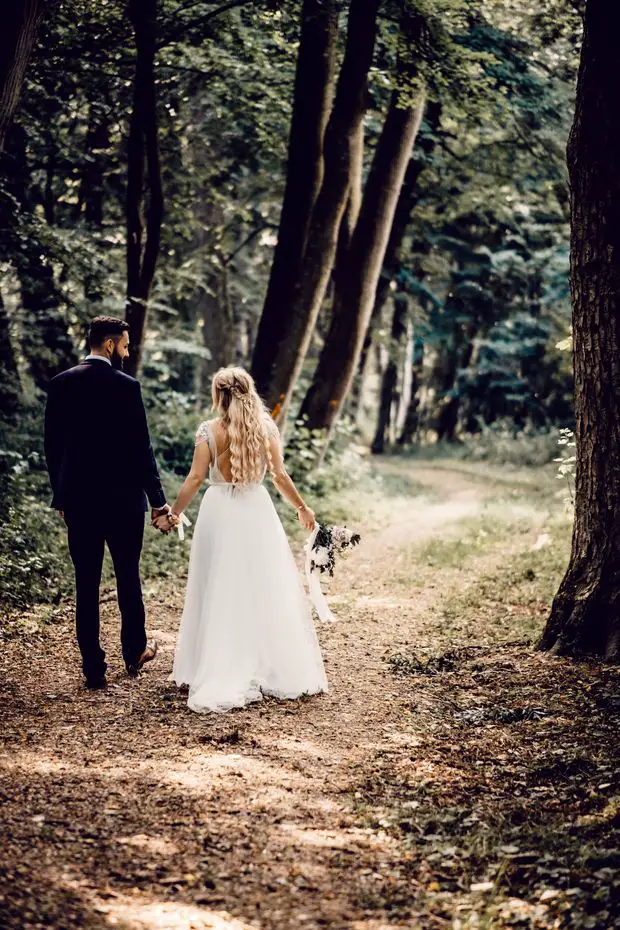
I actually wrote a whole post on what an eco-friendly wedding is, and I recommend that you check it out for more important details. In general, a green wedding is a wedding that is earth-sensitive, whereby we all try to have as little negative impact on the environment as possible in the planning of our big days.
When planning a green, eco-friendly wedding, we obviously try to cut down on unnecessary waste, and to reuse and recycle as much as possible. This can be an unpopular move, and one that some people in the wedding industry generally don’t like too much… because it means couples are spending less money.
Because of societal resistance and because many people just aren’t aware of the huge negative impact of the wedding industry on the environment, we can make ourselves unpopular as we try to make green wedding choices.
All I can say is that you have to know what you want and what you stand for, and be willing to defend those views. Not in an obnoxious way, but firmly so that friends, family members, and salespeople don’t take over your decisions for you.
Basic Principles of a Green Eco-Friendly Wedding
Before getting into the 20-step guide, I want to go over a few basic principles to keep in mind for anyone interested in having a green wedding! Please learn from my mistakes and follow this advice…!
Communicate Your Vision Clearly
I’m guilty of not communicating my hopes to have an eco-friendly wedding as clearly as I could have. This could lead to well-meaning family members and friends, who are only trying to be helpful, giving advice and even taking actions on certain things that aren’t as green as you may have planned.
I would suggest to the braver couples out there to take a clear stand from the beginning of the planning process. And I don’t mean to make an annoying public declaration or anything. But just to tell those around you, when you’re discussing your wedding, how important it is that your wedding be as green as possible… that all of your decisions about the wedding will factor in being less wasteful.
If you just let people know upfront and aren’t shy about it, most people will honor your decision and even try to help you out.
Beware of “Greenwashing”
Greenwashing is when a business says that they’re “green” or “eco-friendly” just for marketing purposes, without actually being green at all. It’s not easy or cheap, in most cases, for businesses to be environmentally-friendly, but the demand from customers is getting higher. Due to this demand, there are some shifty vendors out there looking to profit from this “trend” (as they see it).
Many businesses can get away with this behavior because there isn’t just one organization or institution to regulate eco-friendliness. Organizations like this do exist (such as the GBCI), but vendors don’t need a certification from anywhere in order to call themselves green.
It’s a crappy issue that I’ve struggled with as I’ve been searching for eco-friendly vendors and venues for my wedding. Unfortunately, in some cases, it’s just not possible to check for sure that a vendor is as eco-friendly as they say they are.
Here’s what we can do to avoid falling for greenwashing as much as possible:
- Look for reviews from other eco-friendly buyers in Facebook groups. I’m a member of some eco-friendly wedding groups and I find it really supportive.
- Examine the packaging that’s used. A real eco-friendly vendor will care about the types of packaging they wrap their products in (by using less plastic and other wasteful materials).
- Look for information on third-party websites if possible, such as the Green Business Certification Inc.
- Get recommendations from friends and family, and others you trust and know to be personally eco-friendly and ethical.
Don’t Be Obsessive
It’s easy to get so caught up in finding green wedding options that we can become obsessive. I just want to encourage us all to do our best, and if we can’t find that perfect eco-friendly dishware we wanted… it’s going to be okay.
If we all just do whatever we can wherever we can, even those small eco-friendly choices can make makes a difference.
Reduce/Reuse/Recycle
As you know, this is VERY BASIC for eco-friendly weddings (and eco-friendly anything): Reduce, reuse, and recycle! In fact, you’re probably tired of hearing about it! But it’s just SO DANG true that I have to mention it anyway.
Think to yourself, before you make any vendor or purchase decision: can I do this or get this in a way that promotes reducing, reusing, or recycling? Every one of the 20 steps on this guide list promotes these 3 basic ideas that we learned as children (but tend to forget sometimes)!
Put Your Marriage Before Your Wedding
We’re having this wedding to celebrate the start of our marriages after all! So let’s take deep breaths, and try to focus less on the tiny decorative details, and more on what really matters. This is the beauty of an eco-friendly wedding… concentrating on what is real over the artificial elements of a wedding that we’ve all been trained to care about.
If a detail doesn’t work out exactly as planned, give yourself permission to let it go, laugh it off… and give your partner a hug.
Timeline for Planning a Green Eco-Friendly Wedding
No one timeline will ever be the same, and please don’t fall into the trap of feeling like you absolutely “need” to have everything done before a certain date. The timeline below is an approximation of which order you might want to accomplish wedding planning tasks, and many items can be removed– or you may even want to add to it! I hope this helps, but don’t keep it, or any wedding planning checklist, as gospel.
- Announce your engagement
- Think about your guest list
- Research and visit venues
- Make a wedding website
- Start a gift registry
- Finalize the guest list
- Pick a date
- Set a budget you can stick to
- Book a venue for the ceremony and reception (and possibly a tent)
- Book an officiant
- Start doing some preliminary research on elements you might want to include
- Book a photographer/videographer
- Plan flowers
- Discuss the attire with the wedding party
- Rent equipment
- Send save-the-dats
- Start working on invitations
- Order invitations
- Get a dress
- Get accessories
- Book hair and make-up
- Meet with the caterer
- Get wedding rings
- Get wedding favors
- Send invitations
- Get a marriage license
- Organize transportation
- Go over script with officiant
- Write vows
- Finalize music playlist
- Finalize and book day-of coordinator
- Finalize head count for caterer
- Meet with photographer
- Make list of roles and inform family and friends
- Check in with vendors for last minute changes
- Check in with friends and family about their duties
- Relax and enjoy 🙂
20-Step Guide to Planning Your Green Wedding
And now here is your 20-step guide for creating your own eco-friendly wedding. If you aren’t able to follow all 20 steps, don’t panic. Just do what you can, as much as you can, while still being able to enjoy the process and maintain a happy and healthy balance in your relationships!
#1: Finding Environmentally-Conscious Rings
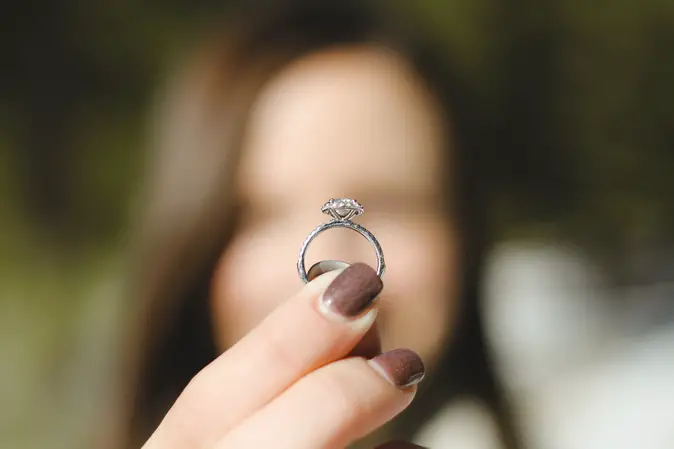
The first purchase made for your wedding is likely to be your engagement ring. And later your wedding rings. If you’re concerned with the environmental impact of diamond mining and conflict diamonds, have a conversation with your partner about this issue before any rings at all are bought.
I strongly suggest that you also take a look at a guide I wrote about eco-friendly wedding rings and bands, which goes into more depth on this specific topic. One bride I read about found out after her wedding that her diamond ring was likely a conflict, or “blood” diamond and later started her own jewelry company that now benefits children in conflict areas. The truth is that many of us just don’t know where our diamond rings are coming from, or what impact pulling them from the earth is having.
When I started researching options for “green” engagement and wedding rings, I didn’t know what I was getting myself into. It’s a complicated world with a lot of confusing marketing.
The bottom line that I came away with was this: Buying a secondhand ring or wearing one that has been passed down as a family heirloom is the BEST, most eco-friendly option.
However, that isn’t an option for everyone, so there are some things to be aware of, especially if you’re going to shop for a new ring…
Buying an eco-friendly, conflict-free diamond ring
I did quite a bit of research and wrote in a previous blog what an eco-friendly diamond actually is. Please take a look at that post for specifics on this super nuanced and complicated issue. There is so much confusion floating around out there, and so much misinformation about what it means for a diamond to be eco-friendly… And unfortunately, I think it’s just because there are so many billions of dollars on the line for the diamond industry.
According to my research, it appears that a truly eco-friendly diamond doesn’t really exist, as both mining diamonds AND creating real diamonds in a lab use non-renewable resources to create. However, there is a long, detailed case against mined diamonds (which I go into in my other post) that makes it really difficult for me to see the benefit of purchasing a diamond mined from the earth.
A final resource on rings that I suggest you check out is a list I compiled of 25 Eco-Friendly & Conflict-Free Wedding Ring Companies. This should give you enough choice of rings, while allowing you the opportunity to buy from ethical companies, or at least — the most ethical jewelry companies I came across in my research.
#2: Making an Eco-Friendly Guest List
The single biggest factor that will determine the eco-friendliness and cost of our weddings is how many guests we invite. The more guests we invite, the less chance we have of hosting a sustainable wedding, and the greater the likelihood that it will cost more!
I know this is hard. I have a huge family and reducing our guest list was painful. We ended up inviting immediate family members and a few close friends only. In the end, it’s going to not only be the greener choice, but also save us literally thousands of dollars.
Imagine that your budget is $100 per guest. If you’re inviting 50 guests, that’s $5,000. But if you invite the 126 wedding guests that the average couple has in the Untied States (Source), then you’re looking at spending $12,600. More than double the price.
More guests means a greater eco-footprint in every respect, including transportation, because all those guests will have to take trains, planes, and cars to get to your wedding. In addition to inviting fewer people, you can make your event more eco-friendly by inviting fewer guests who are from out of town. This is the harsh, but most effective way to accomplish a low-impact wedding!
#3: The Location – Choosing a Green Venue
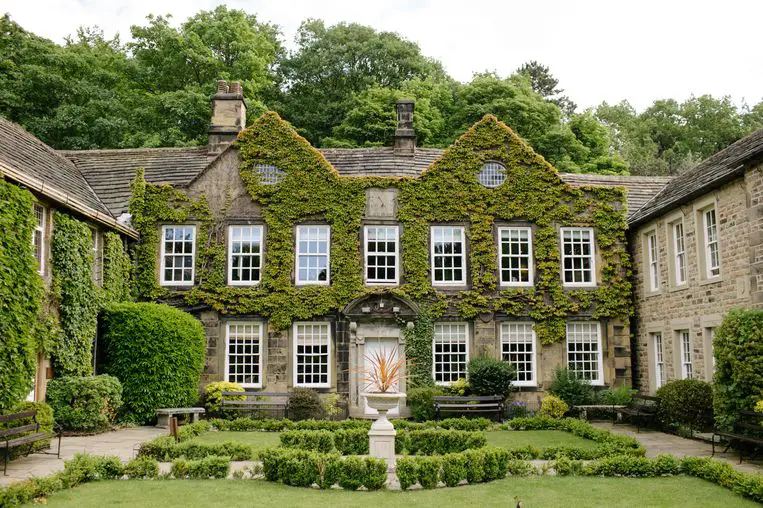
Another HUGE determiner for how environmentally-friendly your event ends up being will rely on the venue that you choose. The amount of energy that is consumed, what type of energy your venue uses, the waste management processes of your venue, and other factors will all influence your footprint.
I wrote an article about how to choose an eco-friendly venue that includes questions you can ask every venue that you meet with in order to gauge how green they are.
Two simple venue decisions that you can make immediately are:
- Have your wedding close to home to reduce transportation emissions, and skip the large destination wedding.
- Have your ceremony and the reception at the same location to reduce the need for additional transportation.
#4: Finding an Elegant, Green, Eco-Friendly Wedding Dress
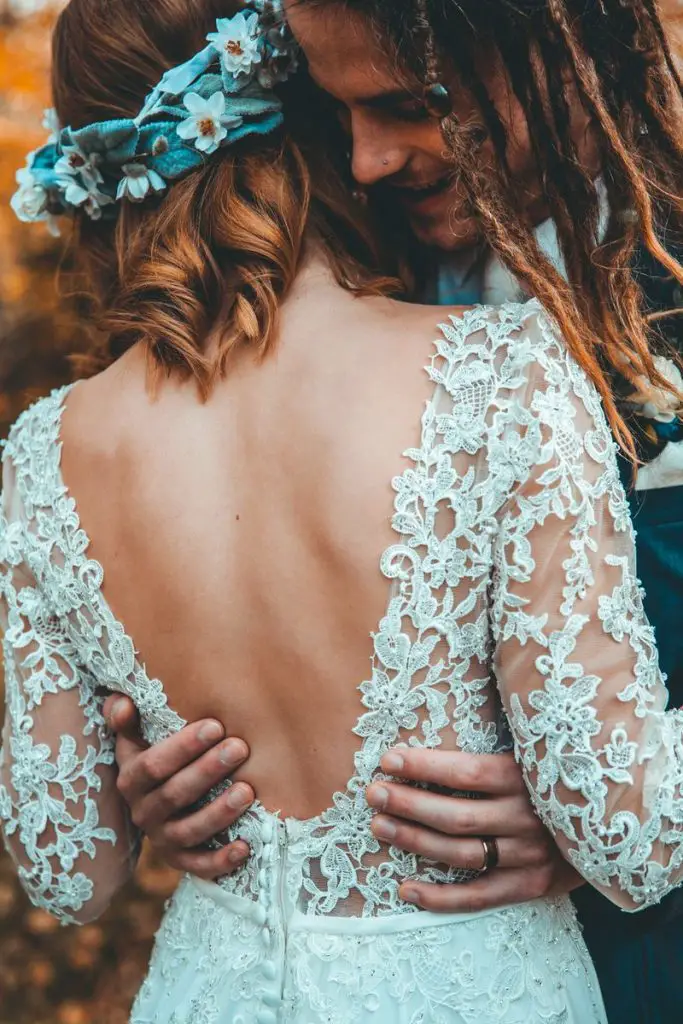
By green dress, I don’t necessarily mean a green-colored dress, although that is perfectly fine too!
I encourage you to truly search for an eco-conscious gown from more conscious companies such as ASOS, as it’ll be at the center of your big day. Let’s not contribute to the enormous amount of waste that’s generated each year from one-time-use dresses that truly make a negative environmental impact (Source).
There are so many choices that brides just aren’t aware of for eco-friendly dresses, and many of these dresses are actually much cheaper than the average amount that brides spend (which is about $1100!).
I think that WAY more brides would purchase eco-friendly wedding dresses if they only knew that (1) they existed, and (2) they’re usually cheaper and (3) many of them are GORGEOUS.
In my own wedding dress search, I made a list of the 9 Most Eco-Friendly and Affordable Wedding Dress Options (that you can buy online). I myself bought my dress from Blushfashion, a ‘boho’ vintage-inspired gown for the low, low price of $220! 🙂
#5: Choosing Green Wedding Attire for the Groom and Groomsmen
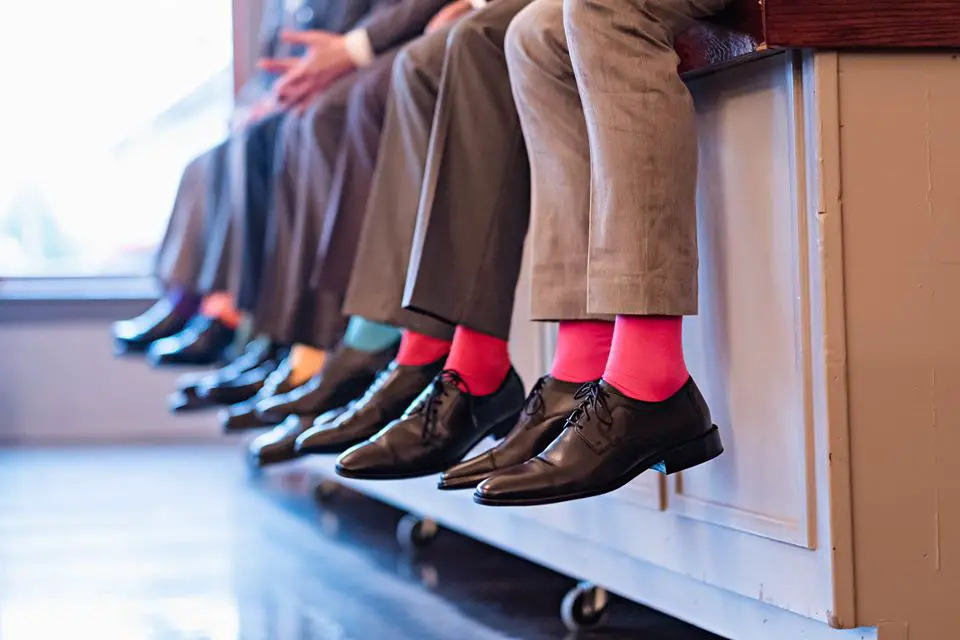
It’s a lot easier in general to make the men’s wear green for your wedding. No one will really care if you rent, buy, or borrow the men’s suits. Some eco-friendly materials to look for when searching for men’s clothes and shoes include:
- Inexpensive hemp
- Organic cotton
- Tencel (Lyocell) made from wood pulp cellulose
- Eco-couture tweed
- Eco-couture hemp
The best thing you can do is ask the men to wear a suit that they already own, and then to bring the groomsmen “look” together with something like matching boutonnieres. Alternatively, you could rent tuxes and use an eco-friendly dry-cleaning service.
If you do want to buy new or matching suits, I really love ASOS which is an online-only store. My partner got his suit here for under $200! Their biggest environmental impact is carbon emissions from transportation, but they have a plan for reducing emissions which you can read about here.
For shoes, I recommend Taft or BauBax (if your wedding is a bit more casual), both of which have a selection of super cool, handmade men’s shoes that are ethical and use eco-friendly materials.
#6: Choosing Green Eco-Friendly Wedding Attire for Bridesmaids
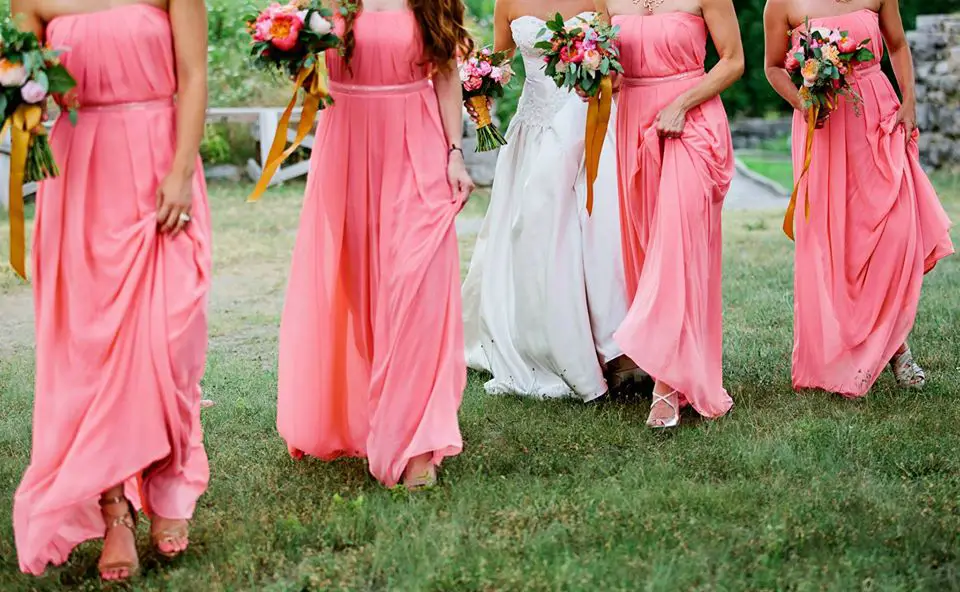
Instead of asking your bridesmaids to buy matchy-matchy dresses that cost (on average) over $200 + alterations, ask them to wear a dress that they already own in a certain color or color palette. My friend asked us all to do this last year in shades of grey and the effect was beautiful.
Mismatched bridesmaid dresses chosen by the women themselves also ensure that the dresses will have more than one life, and that the bridesmaids will feel comfortable and more like themselves in their dresses.
If your bridesmaid don’t already have a dress that they can wear, ask them to borrow one or to look for an eco-friendly option such as the ones listed below (all of which you can purchase online):
Blushfashion: For fair-trade, romantic designer bridesmaid (and bridal) gowns. Get on their email list and they’ll send you all kinds of discounts and promotional offers. I got my wedding dress here for 30% off the original price because of a coupon they sent me on my birthday!
TAMGA Designs: Sells dresses with unique patterns and colors, that would definitely make for a non-boring team of bridesmaids. I like these for a rustic wedding, outdoors or in a barn. TAMGA is huge on sustainability. You can read all about their story and sourcing on their website.
#7: Doing All-Natural and Organic Hair and Make-Up
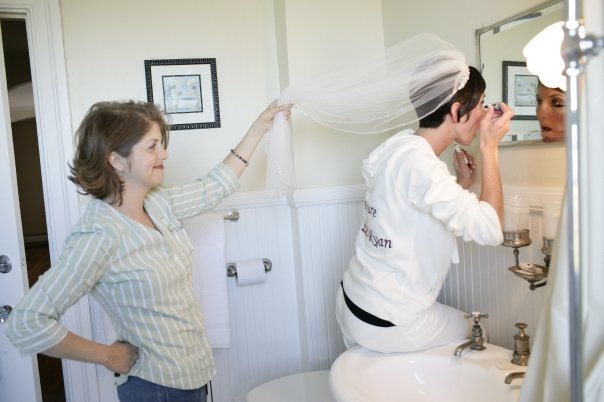
You can still get your hair and make-up done professionally and be a “green bride.” But you may have to bring your own beauty products with you. This does have the benefit of you being able to continue using them long after your wedding however…
The reason is that many salons continue to use products that contain harmful chemicals and toxins. The FDA doesn’t require any testing for cosmetic product ingredients. The cumulative effect of harmful ingredients can do damage to our skin and our bodies, not to mention fill up landfills with trash.
For our weddings and beyond, we can search for and purchase natural, organic soaps, moisturizers, hair products, and make-up that are chemical-free and cruelty-free as well.
It’s usually the men who are at a total loss in regards to personal care and grab for the easiest, but not always the safest or most eco-friendly, products. Consider setting the men in your wedding party straight with some vegan beard, shave, hair, face, and body care from Devlnd LTD, which specialize in premium and niche male grooming products
#8: Sending Eco-Friendly Wedding Invitations and Save-the-Dates
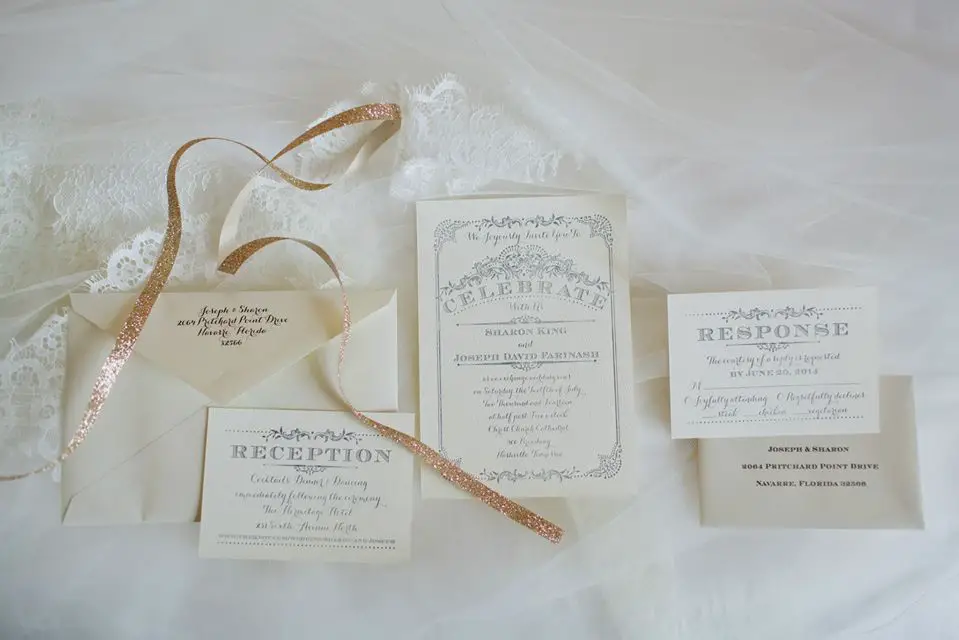
The fastest way to make your wedding invitations and save-the-dates eco-friendly is to simply NOT use paper products, and to go all digital instead. You’ll save forests from being chopped down, and make a point for moving all of our event invitations into the future! You can use any number of wedding website tools to send digital save-the-dates and/or invitations.
If the idea of not having pretty paper invitations and save-the-dates is painful for you, check out Greenvelope, which sends fancy digital invitations that look just like the paper ones.
If all things digital are painful for you, or if you just have those few relatives who will insist on a snail mail invitation or save-the-date, there are other alternatives to wasteful paper products…
Other ideas you might like include using plantable seed paper for your invitations. I wrote all about this, and many other eco-friendly invitation ideas, in my post 20 Eco-Friendly Wedding Invitation & Stationery Brands. If you’re not convinced to save trees yet, you will be after seeing all the beautiful and eco-friendly possibilities in that post!
Related post: Guide to Eco-Friendly Wedding Save-the-Dates
#9: Picking Eco-Friendly Wedding Flowers
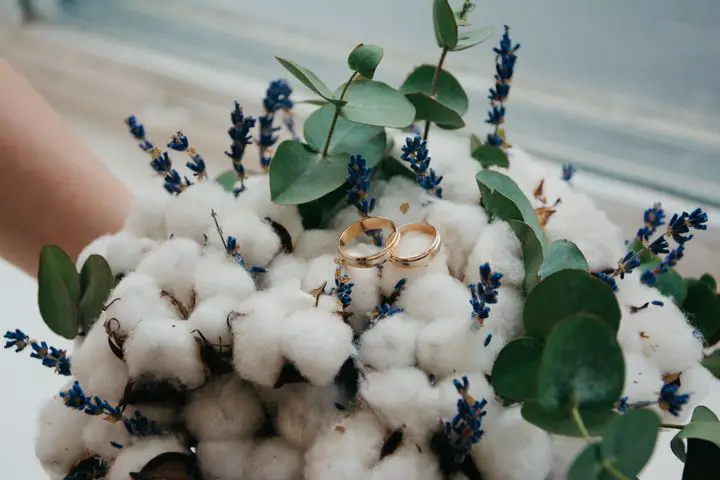
There are SO MANY ways to do eco-friendly wedding flowers or wedding flower alternatives for your wedding! You don’t have to fall victim to the first florist who hands you a crazy expensive quote, who imports flowers full of dangerous pesticides from South America. This is the norm, by the way. I’ve written more about it in my post on 11 Ways to Do Eco-Friendly Wedding Flowers.
Instead, you can buy local flowers, pick wildflowers, get flowers the day-of from your local grocery store, and more! Here are just a few more ideas:
- Reuse flowers from your ceremony at your reception to save money AND the planet
- Use dried flowers, or dry your wedding flowers, and then reuse them as decor in your house
- Use only seasonal and local flowers
- Make your flowers out of paper, such as vintage maps
- Make organic cotton bouquets
- Make flowers out of recycled fabric
- Carry bouquets of fresh herbs instead of flowers
- Use potted flowers and plants as centerpieces and bouquets
- Carry single flowers as bouquets
- Use flower alternatives such as feathers
- Make a bouquet of leafy greenery or branches
For video tutorials and more explanations on some of these suggestions, please visit my post 13 Eco-Friendly Wedding Bouquet Ideas.
And when you’re done with your flowers, the next day you can take them to a local old folks’ home, or a hospital for them to get a second life. There are some organizations who will do this for you. Do a Google search for your wedding location.
#10: Using Green Eco-Friendly Wedding Decorations
This is where I’m struggling because I do love the idea of decorating and yet I understand the eco-friendliest way to go is minimalistic, and to just let nature be its own decoration. We should allow ourselves to be inspired by nature, and not negatively impact our wedding ceremony and reception spaces with too much alteration.
If possible, choose a venue that’s naturally beautiful and doesn’t require too much additional (and wasteful) decor. Here are some other tips:
Centerpieces
Keep them simple! Look into making simple candle and plant displays. Use potted plants such as succulents, or reuse the bridesmaids’ bouquets as centerpieces. Don’t buy a bunch of extra stuff to make your centerpieces that you can’t reuse afterward, and that will just end up in the garbage.
Buy Used Decor from Online Groups
There are Facebook groups and online marketplaces selling decor from previous weddings at low prices. Check out these groups and if you find secondhand items that fit your budget and your vision, try to buy these items and give them a second life. Perhaps you can again resell them after your wedding.
Buy Home Decor for Your Wedding that You’ll Actually Use in Your Home
Buy chairs, tables, carpets, aisle runners, and lounge furniture for your wedding that you’ll actually want to keep afterwards for your house!
Don’t Use Environmentally-Harmful Decorations
This means skip the balloons, glitter and other non-biodegradable confetti, and sparklers. All of these items are harmful to the environment. Instead, make your confetti out of hole-punched dry leaves and/or flowers!
Don’t Order Items From Far Away From You
The first thing many couples do when they start planning their wedding is to go order a million decor items online that they’ve seen on Pinterest. And then half of those items don’t actually get used in the wedding and go to waste when the couple changes their minds later on into the planning process.
Instead, take your time. Think about exactly how many and which type of items you’ll need for the decor, ceremony, reception, etc… and then go out and try to find those items locally. If that’s not possible, at least try to reduce the number of items you buy online, and then actually use them once you get them.
Doing this will save in carbon emissions that occur due to transportation of products shipping across the country (or the world!) just to get to your neck of the woods.
#11: Buying Eco-Friendly Wedding Favors
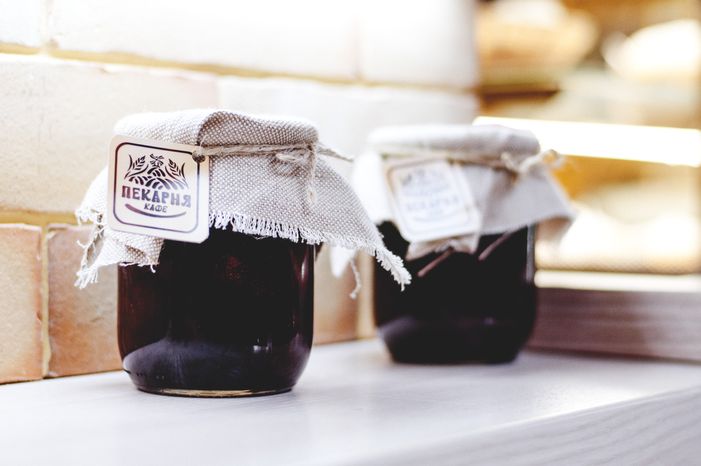
The most eco-friendly favors are no favors, and I recommend skipping them. But if you really want to get favors for your guests, make it something that’s either recycled, recyclable, biodegradable, or a fair trade product. I made a list of socially-conscious wedding favors if you need help coming up with ideas.
#12: Using Eco-Responsible Photography
This is pretty easy these days because most photography is digital. Consider only asking for prints of photos that you absolutely love, need, or are going to put on your walls. Don’t make tons of copies that will just end up in a box in you basement. Also, consider skipping disposable cameras for guests, or Polaroid instant photos.
#13: Hiring Environmentally-Friendly Transportation
As previously mentioned, if you can have your ceremony and reception at the same location, do it, because it will save on the need to transport guests.
Car emissions are a huge pollutant, so we can encourage eco-friendly transportation practices by trying to follow one or more of the guidelines below:
- Have your wedding close to home and invite guests that live nearby (and fewer out-of-town guests).
- Ask your guests to carpool to your wedding, and arrange carpooling for anyone close to you or in your wedding party.
- Hire a bus or trolley to move your entire wedding party en masse.
- Rent hybrid or electric cars and/or ask your guests to consider renting them.
- “Off set” the carbon footprint of the transportation used at your wedding by planting some trees or buying renewable energy credits.
#14: Creating a Green and Eco-Friendly Registry
For many couples who are having eco-friendly weddings, gifts are seen as just more stuff that they don’t need.
To avoid getting a bunch of stuff you don’t want, put a clear message on your wedding website that you would prefer one of the following instead:
- A donation in your name to your favorite charity. Consider your local women’s organizations, homeless shelters, etc.
- A donation to your Honeyfund to pay for activities on your honeymoon.
- A donation to your SoKind registry, which offers all kind of charitable gift ideas to the community in lieu of wedding gifts.
If you are expecting gifts, you can ask on your website that your guests forgo wrapping paper or use recycled paper, on order to reduce paper waste.
Some guests will insist on giving you a gift no matter what, and I suppose you could always later donate whatever it is they give you, or sell it to someone online (I’m sorry, but just keeping it seems wasteful, doesn’t it?!).
#15: Booking a Green Eco-Friendly Honeymoon
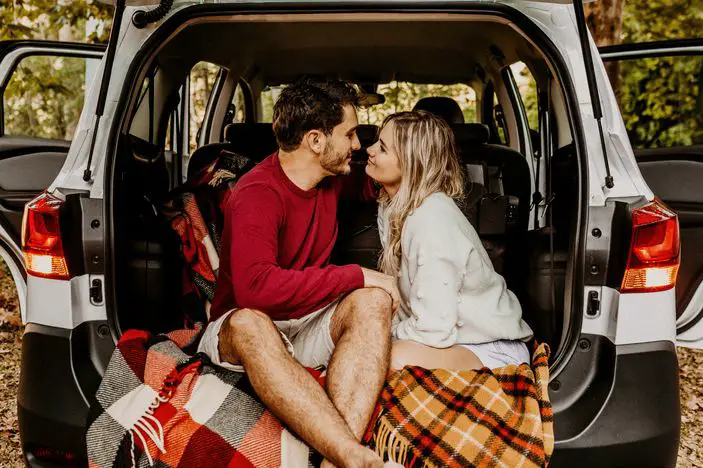
We’ve all heard about the non-eco-friendliness of travel. The NY Times reported that “air travel accounts for about 2.5 percent of global carbon dioxide emissions.”
So what is the eco-friendly couple looking for a cool honeymoon to do? There isn’t a perfect solution besides just staying home and camping, so all we can do is minimize our impact with some of the following tips:
- Take a volunteer vacation: Search for a reputable organization that allows you to pay for the opportunity of volunteering in a sustainable eco-tourist role (sometimes on an eco-reserve in the jungle, or on a marine biology diving station). There are many untrustworthy organizations out there, however, so read reviews and do your homework before booking.
- Avoid going on cruises, which produce insane amounts of waste and dumping, destroy corals, and exploit workers.
- Stay in an eco-lodge or eco-resort: There are basic and luxury options in so many countries where you can experience wildlife and relax, in the middle of a jungle or on a beautiful beach. Do research before booking to find ethical, truly eco-friendly companies.
- Visit a national park: If you live in the US or Canada, national parks are an amazing, ethical, and eco-friendly place to take a honeymoon without going too far.
#16: Searching for Eco-Friendly Catering

Catering is likely to take up a huuuge percentage of your wedding budget so you want to do it right. You want to make green choices while also ensuring that your food will be delicious and memorable for your guests.
A good place to start is to see if any of your favorite restaurants will cater your wedding. I’ve heard of many people getting great deals from small, local restaurants and the food was incredible. Try not to skimp on the food because this is an element of the event that your guests definitely will care about!
Green choices that you can make in your catering selection include:
- Finding and using eco-friendly glassware and flatware
- Having a plant-based, vegan, or vegetarian menu
- Using a caterer that sources organic and local food only
- If serving meat, buying meat that’s sourced locally
#17: Making an Eco-Friendly Bar
To make your bar eco-friendly, I just have a few suggestions. One is to keep the bar simple and not use a million different garnishes and mixers, to reduce waste and use of plastics.
The cups/glasses that get abandoned all around the venue can be quite wasteful, so you can either use all glass, perhaps re-purposed mason jars (and guests can put their names on them with a marker) or:
Have a FIFTY CENT or ONE-DOLLAR Bar – Guests pay a tiny amount for each drink but because they “paid” are psychologically less likely to abandon their drinks! Don’t even worry about a bartender. Just put up a sign “All drinks – $1. Please help us prevent waste by holding onto your glass” and leave a basket or bucket for your guests to throw cash into.
Related post: Cost of Having an Open Bar at Your Wedding
#18: Renting Toilets
No, this is not the most romantic or fun element to plan in your wedding, by far. But it is necessary to think about!
If you’re having an outdoor wedding, think long and hard about the bathroom situation. For every 50 guests, you need to have at least one toilet. If that means renting a portable bathroom, make sure you have that all sorted beforehand. You don’t want your septic tank overflowing or your poor guests having to wait in a huge bathroom line during your wedding.
I’ve written a helpful guide on this topic that I suggest you read. As for eco-friendliness, some couples have even made compost toilets for their backyard weddings which I think is a really cool touch if you’re handy like that!
#19: Wearing Eco-Friendly Wedding Shoes
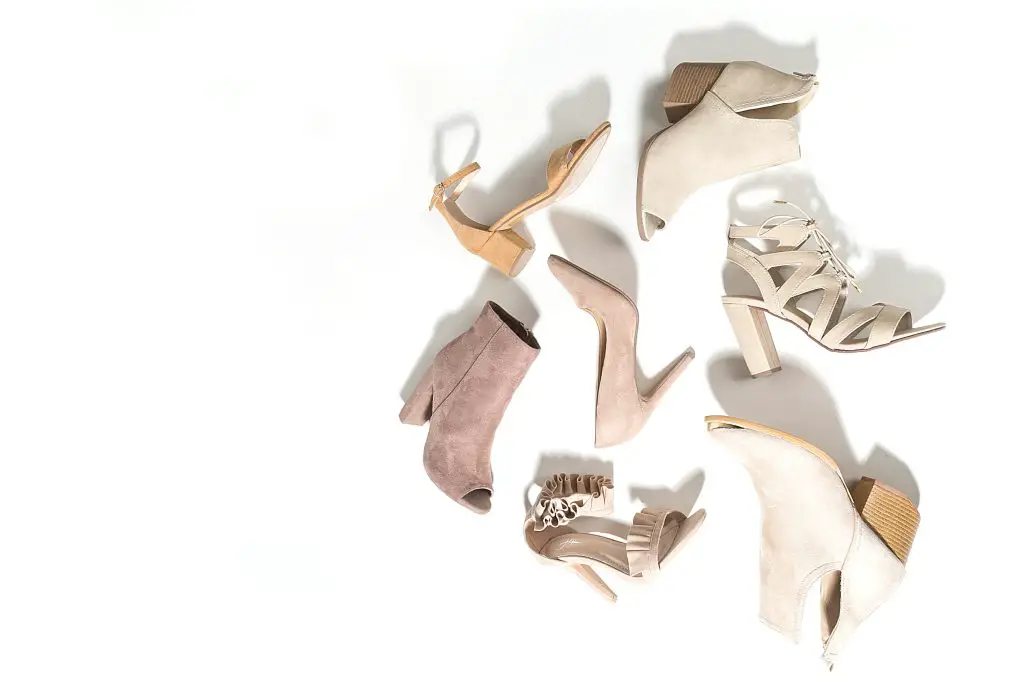
I mentioned shoes briefly above (for men) in Step #6 but for the bride and bridesmaids, eco-friendly shoes can be found on a variety of websites. I made a list of 21 Ways to Do Eco-friendly Wedding Shoes that is super helpful. But as always, the best option is to wear a paid of shoes that you already own or to borrow a pair.
#20: What to Do After the Wedding
After your wedding, you can take a few more steps to ensure your wedding is green. Here are just a few ideas:
- Donate your flowers after your wedding
- Sell your decor online after your wedding
- Email or call in your ‘Thank you’ notes instead of using snail mail
- Donate excess food to a local homeless shelter (call first to ask if they accept donations)
- Donate or sell your wedding gown
That’s it! I hope that you can take a few or all of these guidelines and integrate them into the heart of your green wedding planning! Good luck to us all! 🙂 Here’s a video I made on my Wedding YouTube Channel about this topic:
Sources:
- The Everything Green Wedding Book: Plan An Elegant, Affordable, Earth-Friendly Wedding by Wenona Napolitano
- The Green Bride Guide: How to Create an Earth-Friendly Wedding on Any Budget by Kate Harrison
- Green Weddings That Don’t Cost the Earth by Carol Reed-Jones
- The Green Wedding Guide: Creating a Celebration That’s Elegant and Ethical by Valerie Edmunds
- Green Can Be the New White for Wedding Dresses (Sang-Hee Kwon, 2017)

